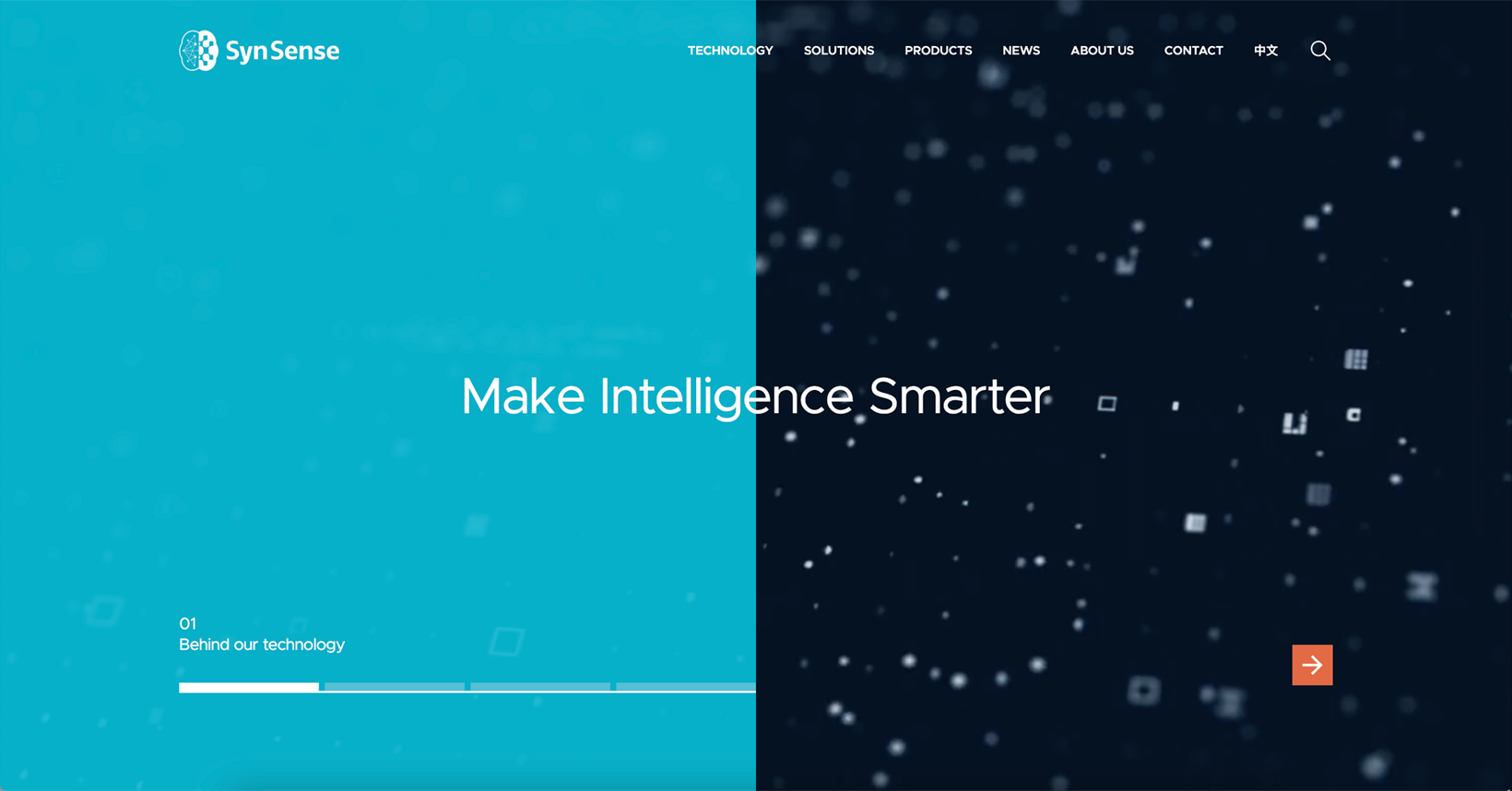Steve10
Regular
A company similar to Prophesee is iniVation with their neuromorphic vision systems.

 inivation.com
inivation.com
iniVation partnered with SynSense in 2019 to develop Speck which is a low power smart vision sensor for mobile & IoT devices.

 www.synsense.ai
www.synsense.ai

 www.synsense.ai
www.synsense.ai
Speck™ is a fully event-driven neuromorphic vision SoC. Speck™ is able to support large-scale spiking convolutional neural network (sCNN) with a fully asynchronous chip architecture. Speck™ is fully configurable with the spiking neuron capacity of 320K. Furthermore, it integrates the state-of-art dynamic vision sensor (DVS) that enables fully event-driven based, real-time, highly integrated solution for varies dynamic visual scene. For classical applications, Speck™ can provide intelligence upon the scene at only mWs with a response latency in few ms.
Prophesee partnered with SynSense in 2021 to develop a one chip event based smart sensing solution for low power edge AI.
 www.prophesee.ai
www.prophesee.ai
Prophesee partnered with BrainChip in 2022 to optimize computer vision AI performance & efficiency.

 www.prophesee.ai
www.prophesee.ai
Prophesee CEO has mentioned BrainChip is a perfect fit for their event based camera vision sensor.
Qualcomm have recently partnered with Prophesee which has been working with Snapdragon processors since 2018.

 www.globenewswire.com
www.globenewswire.com
Qualcomm mentioned Prophesee event based cameras will be launched this year in their recent presentation, however, there was no mention of SynSense's Speck.
It's a puzzle this one. Unless Qualcomm will use Prophesee's metavision event based sensor only with their own processor suitable for neuromorphic SNN if they have one.
I am intrigued because the smartphone market dominated by Qualcomm will result in big revenue for BRN if Akida IP is embedded in their chip for Prophesee's event based camera. It took ARM nearly 10 years from when they started to get into smartphones.

iniVation – Neuromorphic vision systems
Extreme Machine Vision High-performance neuromorphic vision systems for demanding real-time applications iniVation is a world leader in neuromorphic vision systems. Our bio-inspired intelligent technology offers unprecedented advantages over conventional machine vision systems: ultra-low...
 inivation.com
inivation.com
iniVation partnered with SynSense in 2019 to develop Speck which is a low power smart vision sensor for mobile & IoT devices.

SynSense and iniVation announce Speck: a micropower smart vision sensor for mobile and IoT devices | SynSense
Synsense and iniVation are launching Speck, a micropower combined vision sensor and processor SoC, at CES2019 in Las Vegas.Speck is the world’s first complete, single-chip, intelligent neuromorphic vision system for mobile and IoT applications. It delivers smart, always-on vision sensing at a...

Speck™: Event-Driven Neuromorphic Vision SoC | SynSense
Speck is the world’s first fully event-driven neuromorphic vision SoC using the dynamic vision sensing and the spiking neural network technology.
Speck™ is a fully event-driven neuromorphic vision SoC. Speck™ is able to support large-scale spiking convolutional neural network (sCNN) with a fully asynchronous chip architecture. Speck™ is fully configurable with the spiking neuron capacity of 320K. Furthermore, it integrates the state-of-art dynamic vision sensor (DVS) that enables fully event-driven based, real-time, highly integrated solution for varies dynamic visual scene. For classical applications, Speck™ can provide intelligence upon the scene at only mWs with a response latency in few ms.
Prophesee partnered with SynSense in 2021 to develop a one chip event based smart sensing solution for low power edge AI.
SynSense and Prophesee develop one-chip event-based smart sensing solution
Partnership leverages respective leadership in neuromorphic computing and sensing to realize on-sensor processing integration leading to small form-factor, low-power and cost-effective IoT solutions
Prophesee partnered with BrainChip in 2022 to optimize computer vision AI performance & efficiency.

BrainChip Partners with Prophesee
BrainChip Partners with Prophesee Optimizing Computer Vision AI Performance and Efficiency
Prophesee CEO has mentioned BrainChip is a perfect fit for their event based camera vision sensor.
Qualcomm have recently partnered with Prophesee which has been working with Snapdragon processors since 2018.
Prophesee introduces Onboard™, its first reference system for implementing breakthrough event-based machine vision in Industry 4.0 applications
Onboard™ reference system helps product developers explore untapped performance and efficiency potential with Prophesee revolutionnary bio-inspired,...
Qualcomm mentioned Prophesee event based cameras will be launched this year in their recent presentation, however, there was no mention of SynSense's Speck.
It's a puzzle this one. Unless Qualcomm will use Prophesee's metavision event based sensor only with their own processor suitable for neuromorphic SNN if they have one.
I am intrigued because the smartphone market dominated by Qualcomm will result in big revenue for BRN if Akida IP is embedded in their chip for Prophesee's event based camera. It took ARM nearly 10 years from when they started to get into smartphones.





